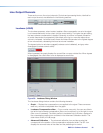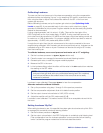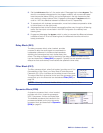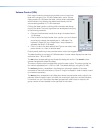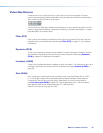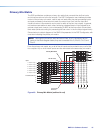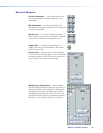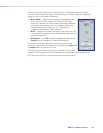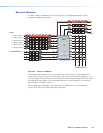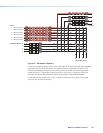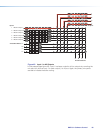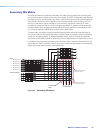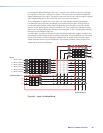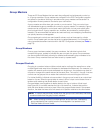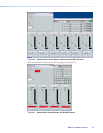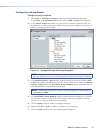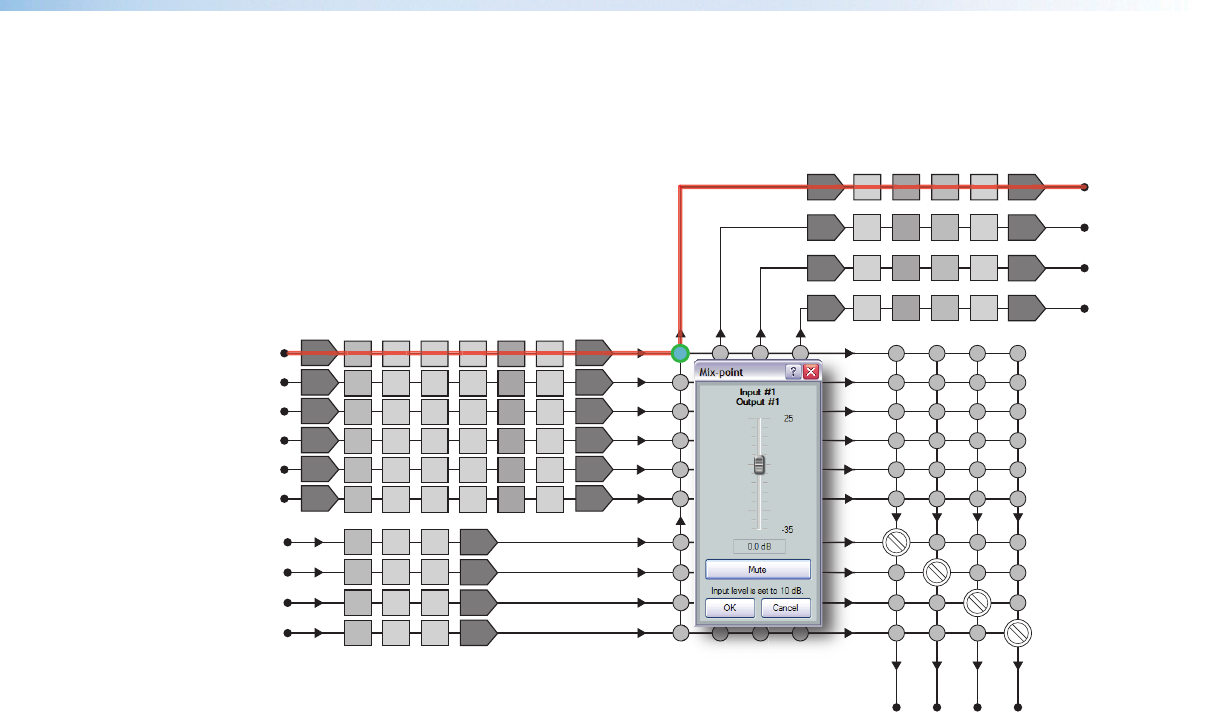
Mix-point Examples
In order to better understand how mix-points work, the following diagrams provide
examples of different mix setups.
Mic/Line Input 1
Mic/Line Input 2
Mic/Line Input 3
Mic/Line Input 4
Mic/Line Input 5
Mic/Line Input 6
A
B
C
D
1
2
3
4
5
6
ABCD
1
2
3
4
Outputs
Virtual Bus Send
Virtual Bus Return
FILTDLY
LOUD
DYN
VOLTRIM
FILTDLY
LOUD
DYN
VOLTRIM
FILTDLY
LOUD
DYN
VOLTRIM
FILTDLY
LOUD
DYN
VOLTRIM
GAIN
GAIN
FILT FBS DYN
DYN
DLY
DUCK
GAIN
GAIN
FILT FBS DYN
DYN
DLY
DUCK
GAIN
GAIN
FILT FBS DYN
DYN
DLY
DUCK
GAIN
GAIN
FILT FBS DYN
DYN
DLY
DUCK
GAIN GAIN
FILT FBS DYN
DYN
DLY
DUCK
GAIN
GAIN
FILT FBS DYN
DYN
DLY
DUCK
Inputs
FILT DYN
GAIN
LOUD
FILT DYN
GAIN
LOUD
FILT DYN
GAIN
LOUD
FILT DYN
GAIN
LOUD
GAIN
GAIN
FILT
FBS
DYN
DYN
DLY
DUCK
FILT
DLY
LOUD
DYN
VOL
TRIM
Figure 41. Input 1 to Output 1
In the first example (see figure 41), input audio from Mic/Line Input 1 is processed and
arrives at the output mix-point. Double-click on the mix-point to open the dialog box. The
mix-point opens muted (mute box is red). When the mute button is released, the mix-point
turns teal with a light green circle to indicate the open mix-point dialog box is the focus,
and the signal is routed to output1.
The mix level can be adjusted using the slider or by direct input of a value between
-35and 25.0dB into the dialog box below the slider.
DMP64 • Software Control 64



